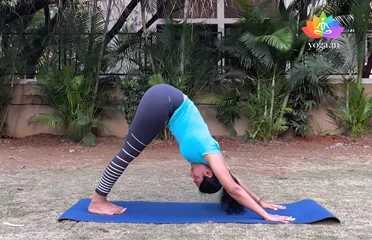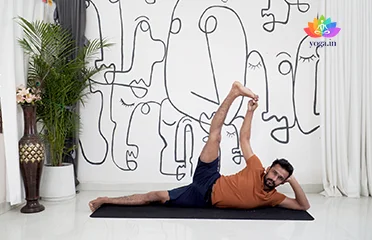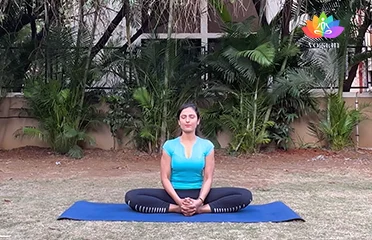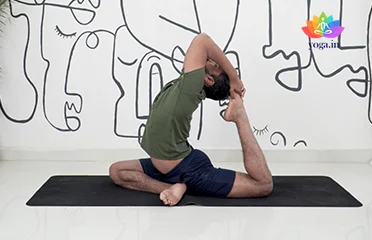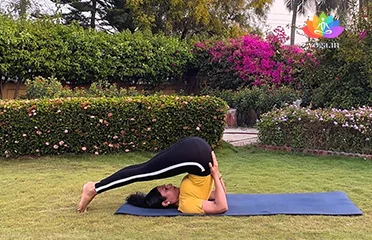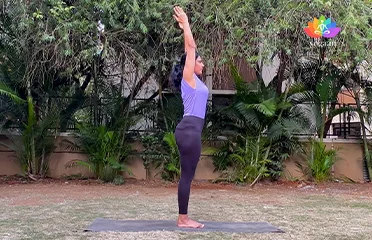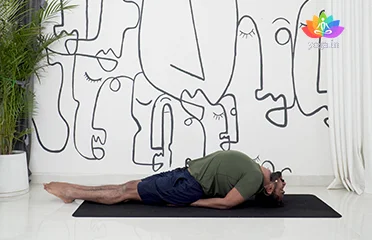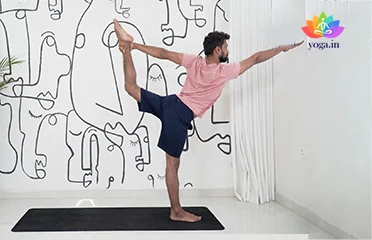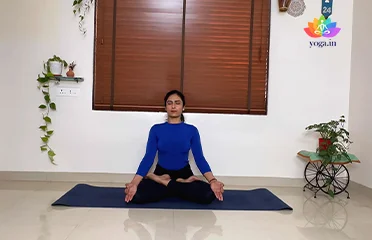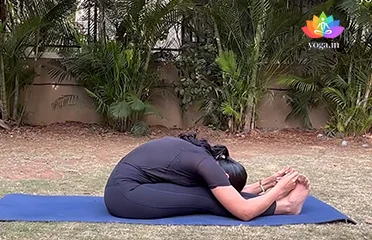Adho Mukha Svanasana (Downward-Facing Do
अधोमुख श्वानासन / Downward-Facing Dog Pose
The sanskrit name is derived from adhas (अधस्) meaning down, mukha [�K]
Anantasana (Sleeping Vishnu Pose)
अनन्तासन / Sleeping Vishnu Pose | Vishnu's Couch Pose
The Sanskrit name is derived from Ananta (अनन्त) meaning without end [�K]
Bhadrasana (Gracious Pose | Butterfly Po
भद्रासन / Gracious Pose | Butterfly Pose
The Sanskrit name is derived from Bhadra (भद्रा) meaning gracious, [�K]
Eka Pada Rajakapotasana (King Pigeon Pos
एक पद राजकपोटासन / King Pigeon Pose
The Sanskrit name is derived from Eka (एक) meaning one, Pada (पाद) [�K]
Halasana (Plough Pose)
हलासन / Plough Pose
The Sanskrit name is derived from Hala (हला) meaning plough and asana [�K]
Hastapadasana (Hand to Foot Pose)
हस्तपदासन / Hand to Foot Pose
The sanskrit name is derived from hasta (हस्त) means hands, pada (पदा) [�K]
Matsyasana (Fish Pose)
मत्स्यासनI / Fish Pose
The Sanskrit name is derived from Matsya (मत्स्या) meaning fish [�K]
Natarajasana (Lord of the Dance Pose)
नटराजासन / Lord of the Dance Pose
The Sanskrit name is derived from Nata (नट) meaning dance, Raja (राजा)) [�K]
Padmasana (Lotus Pose)
पद्मासन / Lotus Pose
The Sanskrit name is derived from Padma (पद्मा) meaning lotus and [�K]
Paschimottanasana (Seated Forward Bend)
पश्चिमोत्तानासन / Seated Forward Bend
The Sanskrit name is derived from three sanskrit words: Paschima (पश्चिमा) [�K]
- 1
- 2
Breathe Easier: How Yoga Can Help Manage Lung Conditions
Lung conditions, such as asthma, bronchitis, and chronic obstructive pulmonary disease (COPD), affect breathing and can significantly impact daily life. Yoga can aid in the treatment and relief of lung conditions by enhancing lung capacity, improving respiratory function, and reducing stress. Through specific postures and breathing exercises, yoga promotes better oxygen flow and relaxation, helping to alleviate symptoms.
Understanding Lung Conditions:
Lung conditions encompass a variety of disorders that affect the lungs and respiratory system. These can include chronic diseases like asthma and COPD, as well as acute infections like bronchitis and pneumonia. These conditions can lead to difficulty breathing, chronic cough, and other respiratory issues, impacting overall health and quality of life.
Yoga’s Role in Relieving Lung Conditions:
Specific yoga practices can help alleviate the symptoms of lung conditions by improving lung capacity, enhancing respiratory function, and reducing stress. Gentle asanas (postures), pranayama (breathing exercises), and meditation can support respiratory health, increase oxygen flow, and promote relaxation.
Key Factors Contributing to Lung Conditions:
Several factors can contribute to the development of lung conditions, including:
- Smoking: Major cause of lung diseases like COPD and lung cancer.
- Air Pollution: Long-term exposure to polluted air can damage lung tissue.
- Allergens: Triggers for asthma and other allergic respiratory conditions.
- Infections: Bacterial, viral, or fungal infections can lead to acute or chronic lung conditions.
- Genetics: Family history of respiratory diseases increases the risk.
- Occupational Hazards: Exposure to harmful substances in certain jobs can damage the lungs.
Symptoms of Lung Conditions:
Common symptoms of lung conditions include:
- Shortness of Breath: Difficulty breathing or feeling breathless during physical activity or at rest.
- Chronic Cough: Persistent cough that lasts for weeks or longer.
- Wheezing: A whistling or squeaky sound when breathing.
- Chest Tightness: Feeling of constriction or pressure in the chest.
- Frequent Respiratory Infections: Recurring infections like bronchitis or pneumonia.
- Fatigue: Feeling unusually tired or exhausted, even with minimal exertion.
- Mucus Production: Excessive mucus or phlegm, often associated with coughing.
Treatment of Lung Conditions through Yoga and Pranayama:
Yoga and pranayama can be very beneficial in managing lung conditions. Some effective practices include:
Specific Yoga Poses:
- Bhujangasana (Cobra Pose): Opens the chest cavity, allowing for deeper and fuller breaths.
- Setu Bandhasana (Bridge Pose): This pose stretches the chest muscles and opens the rib cage, allowing for deeper and fuller breaths.
Pranayama Exercises:
- Kapalabhati (Skull Shining Breath): This is a stimulating breath technique that involves forceful exhalations followed by passive inhalations.
- Anulom Vilom (Alternate Nostril Breathing): This calming breath technique involves inhaling through one nostril while closing the other, then exhaling through the opposite nostril. Promotes relaxation, improves focus, and can help clear congestion, leading to better lung function.
Diet for Lung Conditions:
A balanced diet can help manage lung conditions. Recommendations include:
- Antioxidant-Rich Foods: Berries, nuts, and green leafy vegetables support lung health.
- Omega-3 Fatty Acids: Found in fish, flaxseeds, and walnuts, these reduce inflammation.
- Hydration: Drink plenty of water to keep mucus thin and easier to expel.
- Vitamin C-Rich Foods: Citrus fruits, strawberries, and bell peppers boost the immune system.
Caution for Lung Conditions:
While practicing yoga for lung conditions, it is essential to:
- Avoid Overexertion: Practice at a gentle pace to avoid straining the lungs.
- Monitor Breathing: Be mindful of your breath and stop if you experience discomfort.
Always consult with a healthcare provider before starting any new exercise regimen, especially if you have a severe lung condition.
Contraindications for Lung Conditions:
Individuals with severe lung conditions or significant respiratory distress should:
- Avoid High-Intensity Yoga: Vigorous practices might exacerbate symptoms.
- Steer Clear of Inversions: Poses like headstands can make breathing more difficult.
- Seek Professional Guidance: Consult a yoga therapist or healthcare professional for personalized recommendations.


